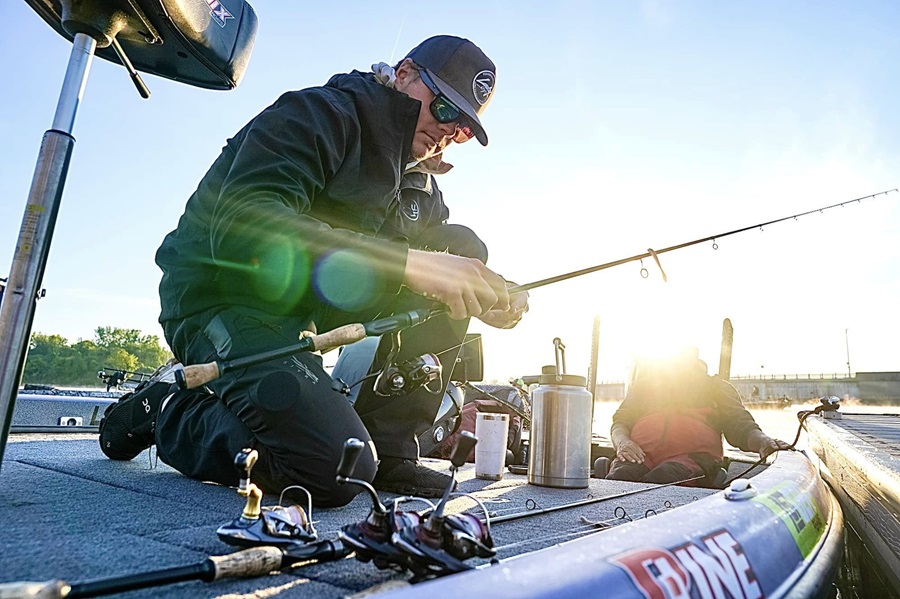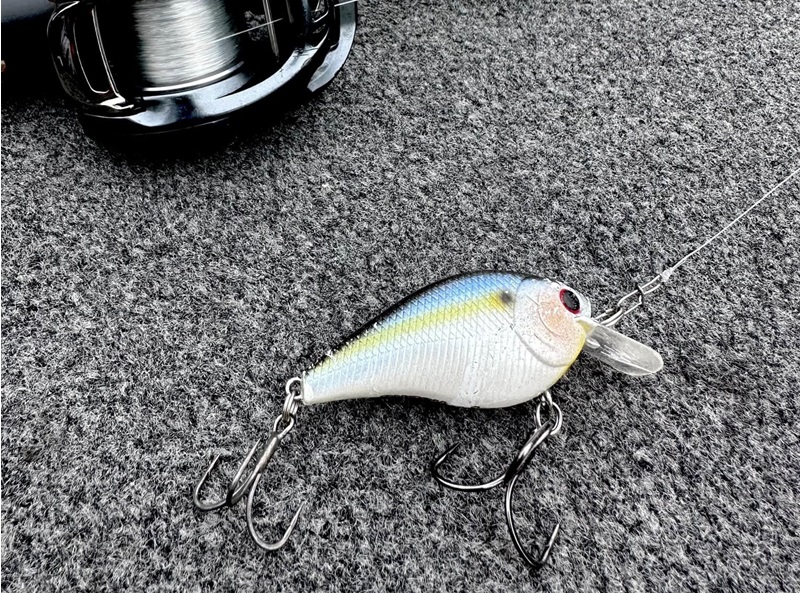 Fishing during the cooler weather can be some of the year's best action and can be pretty fast and furious at times. It's also a time when many different techniques and baits will work and when the front deck of your boat gets more and more packed with rods as the day goes on. Tackle Warehouse Invitationals angler Andrew Loberg realizes this and is ready for anything but sticks with some tried-and-true fall lures.
Fishing during the cooler weather can be some of the year's best action and can be pretty fast and furious at times. It's also a time when many different techniques and baits will work and when the front deck of your boat gets more and more packed with rods as the day goes on. Tackle Warehouse Invitationals angler Andrew Loberg realizes this and is ready for anything but sticks with some tried-and-true fall lures.
"It's a tricky time of year because just about every lure you have will catch fish," he said. "Topwater is something that works just about everywhere this time of year. Three others that seem to work all over the country in the fall would be a squarebill, vibrating jig, and a glide bait."
Topwaters
A walking topwater bait is no secret during the fall months and Loberg always has one tied on and will also mix in poppers when he needs to slow it down. Generally, he's looking for areas where the baitfish and bass will mix as the water cools.
"I'm looking for the highways between the mainlake and the back of creeks as the baitfish migrate," he said. "Secondary points leading into the cuts and any type of creek channel heading to a backwater will be good places to start."
When fishing these topwater baits, he's a big proponent of braided line for better casting distance and the no-stretch properties for better hookups.
"Most of the time, I am going to have 50-pound P-Line TCB 8 braid for all of my topwaters," he said. "I've tried the 30 and 40, but keep my line choices simple and stick with 50-pound. That's a great braid and limp right out of the box, so it casts extremely well right away."
When fishing small poppers, he switches to a monofilament, P-Line's High Performance Copolymer Topwater Line. "It's limp and easy to cast, and I'll use 10-pound for poppers," he said. "I like that it has really low memory and casts those light baits very well."
 Squarebill crankbaits
Squarebill crankbaits
Another time-honored fall lure is a squarebill and Loberg says they are one of his favorites, especially when fishing shallow cover and searching and covering water.
"They are great when the bait pushes shallow and you can put the trolling motor on high and roll," he said. "I'll fish them around anything I come across, but the best places will be the transitions either from rock to wood or different kinds of rock or grasses coming together. They are also great when you have fish schooling and catch them on topwater and the bite shuts down. You can usually head to the bank in those areas and start catching them on a topwater."
Typically, Loberg will be fishing 12 or 15-pound P-Line Ultimate Fluorocarbon for standard baits like the Lucky Craft 1.0 and 1.5, but he will upsize for bigger baits. "If I'm fishing a Lucky Craft BDS 3 or 4 and the water is a little dirty, I'll use 17 or 20-pound," he said. "Those are times when you aren't worried about getting the bait down deeper and just trying to get the big profile and squarebill action from your bait."
Vibrating jigs
If there is any grass around, chances are that Loberg will be fishing a vibrating jig, either in white or green pumpkin.
"I like to fish grass and will be throwing a 1st Gen Copperhead bladed jig," he said. "It has rattles in the head and it's mega loud. The sound separates it from other vibrating jigs and it's great when everyone else is throwing the other baits."
For line, he keeps it simple with 20-pound P-Line Ultimate Fluorocarbon. "That's what I throw for all my vibrating jigs," he said. "It works so well and it's very strong."

Glide baits
During a time when many bass are focused on eating small shad, Loberg likes to go against the grain with large 7 to 12-inch glide baits. "I go to the opposite instead of trying to match those small baitfish because they are gorging on them this time of year," he said. "I like to go a lot bigger and give them one big profile to see. Glide baits are a reaction strike and having a big profile gets their attention."
Loberg says he fishes them in the same places as he does with his squarebills. "You want to fish them around cover where they can ambush the bait," he said. I'll fish them around rocks, laydowns, seawalls, and boat docks. Since I'm keeping the bait higher in the water column, 1 to 3 feet below the surface, I like a monofilament. 20-pound P-Line CXX in moss green is my go-to. It's an indestructible line, and you don't have to worry about it getting damaged when throwing a big, heavy, expensive bait."
During the fall, Andrew Loberg keeps it moving with fast-moving baits covering ground and appealing to the baitfish-chasing bass. These four lure styles have worked for him nationwide and will be in his arsenal until winter again this year.


 Advertising
Advertising